DALI Helicon 400 Jubilee Sound Test
The commissioning of the Euphonia High End acoustics series in 2002 marked the start of the process of a full-scale reconstruction of the upper echelon of the DALI model range based on a complex of technical and technological solutions that were the fruit of many years and arduous research activities. Following Euphonia, members of the New Suite family saw the light of day. The Helicon 400 Jubilee acoustic pair, created to commemorate the Danish company's twentieth anniversary, paves the way for the new series, which is expected to be completed in February 2004.
It will be headed by Helicon 800, about which we only know that it will be taller, more powerful and more powerful than the four hundred. In the corporate hierarchy, the new series will occupy a position that hitherto belonged to the Grand cohort - a step above which only Euphonia and the queen of the Megaline lineup. Of course "Helicon" and "euphonious" (Euphonia - harmony in Greek), for obvious reasons, must have a constructive similarity, but the degree of relationship between Helicon 400 and Euphonia MS4 (the smaller of the two floorstands in the series, the price of which is $ 7000) should be considered extraordinary. The difference in size is negligible.
The number, size and layout of drivers are the same; "By eye" the heads are practically indistinguishable. However, if you look closely, you notice the heads of four additional fastening screws around the silk dome of the HF module in the Helicon 400, but drawing any conclusions about the specifics of the high-frequency "Helicon" on this basis is a completely thankless task. Just like the MS4, the 3.5-band scheme works: both 165 mm woofers make exactly the same contribution to the sound field energy in the region from the lower limit to 500 Hz; higher, thanks to the crossover, the radiation of the lower woofer gradually weakens; the activity of the second woofer is suppressed by the filter after 3.5 kHz; on the 3.5-13.5 kHz segment, practically only the dome tweeter sounds, higher in its voice is woven a thin voice of the "ribbon", reaching the frequency range up to ultrasonic 28 kHz (the "silk" sound with increasing frequency decays by itself without interference of the crossover) ... Digging deeper. Despite the external one hundred percent similarity, the dynamics of the "helicon" are still "personal".
The electromagnetic part of the woofers is designed somewhat differently than that of the MS4. But the diffusers of the color of the frozen juice of the Georgian Juchela (red grape variety) are exactly the same - made of wood-paper composite with a thin layer of damping coating. The RF module tape supertweeter is an exact replica of the one installed on all Euphonia models. And the domed silk membrane of an ordinary tweeter is made using a slightly different technology. In general, the ideology of the design of the acoustic design has been preserved - curved side panels, the settling of the LF / MF drivers and the crossover into separate "apartments". Helicon 400 multi-layer body; the walls are assembled from thin MDF panels using a special technology that allows the MDF sandwich to be bent in a predetermined manner. Two blind horizontal partitions divide the internal volume of the case into three parts.
A small amount of dedicated space at the bottom of the speaker is taken up by a handcrafted crossover. By isolating the crossover filters from the powerful pressure pulsations excited by the back side of the LF / MF membranes, the developers strive to minimize the fluctuations of the electrical parameters of the RLC chains caused by these pulsations - a measure, I must say, is not at all superfluous. Each of the two equal-sized upper volumes is ventilated with its own bass-reflex port and serves as an acoustic design for one of the woofers. There are additional stiffeners. Of course, the walls of the decoration are lined with a sound-absorbing coating. Based on the measurement results (slight persistence effects), all of these factors, including the curved shape of the side panels, work quite effectively.
The assembly of the crossover placed in the "zero pressure" chamber is traditionally for DALI carried out without the use of textolite printed circuit boards, all 15 elements are soldered directly to each other (leg to leg) and fixed on a panel that is weakly susceptible to elastic disturbances, which, in turn, is attached to self-tapping screws to a massive base. Internal wiring is carried out by our own (patented) Cordial cable (cross-section 2.5 sq. Mm for switching with woofers / midrange speakers and 0.75 sq. Mm - with HF-module). Jumpers for the external terminal block are also made from pieces of proprietary audiophile cable. Note that the extremely high stability of the input impedance module (see technical note) is largely due to the applied crossover circuitry. But where does the significant price difference between the MS4 and the Helicon 400 come across? Probably, the main part of this distance is taken by the body, made for the two models using slightly different technologies.
The front panel of the first is much more powerful; its unshakable base is made of granite-polymer mass (in the 400th it is made of wood). But to what extent can this affect the sound quality? Let's listen. The differences in the passport data are almost imperceptible: the MS4 is 3.5 kg heavier than the "helicon", the crossover frequencies differ slightly, the lower boundary of MS4 is 1.5 Hz higher, and the sensitivity is 0.5 dB lower. The quality of the Helicon 400 is impeccably finished with natural cherry veneer, the surface of which is lacquered and polished to the highest standards - and with the naked eye you can see that the item is very expensive.
It is unreasonable to try to follow the path of "head-on" comparison of the sound images of the 400 and MS4, all the more to do it in absentia - the risk of inadequate placement of accents is too great. But it is absolutely indisputable that they play music in very close manners. It is very gratifying that in the case of "helicon" one can responsibly state the fact of transformation of a high measure of dynamic and tonal resolution into that level of quality of presentation of musical material, which makes it possible to speak of the possibility of its multidimensional, truly music-loving perception, gives a chance to come closer to understanding and evaluating the most subtle facets of performing skills. It seems that while creating the system, the developers paid special attention to preserving the microrelief of the recording, the focus of the sound image. By describing only a number of moments, you can designate (no more) a lot of impressions, remaining from many hours of listening sessions four hundred.
I remember the surprisingly voluminous image of the stage space. There, in its depths, musical forms are born equally and surprisingly realistically. But no inversions: just like in a concert hall, sound from the periphery breaks through the light veil thrown onto the stage by the thickness of the produced virtual space. It's just very beautiful. It is impossible to keep silent about one of the most attractive features of the sound image of the "Helikon" - an extraordinary clean, precisely articulated, very natural, like breathing, bass. In no case should this dignity be underestimated, the possession of which is the privilege of a select few. Let us explain.
Experience has accustomed us to the almost inevitable (even for acoustics of very high price categories), as it were, a clouding of the lower part of the musical signal spectrum, due to both the coloration of the bass (albeit very insignificant) and the increase (with decreasing frequency) of nonlinear distortions - here the physical limitations of the sound reproduction method are especially pronounced. The level of these artifacts is different, but it is almost impossible to exclude them completely. It looks like DALI managed to find a very precise compromise between depth, quality of the illuminated low-frequency register and, let's not be afraid of this clarification, the cost of solving the low-frequency problem. In general, the purity of all aspects of the reproduced by Helicon 400 sound images liberates the listener, frees him from the constraints of home staging of a musical performance.
Having offered a four hundred complex recording of piano music, known for its trickyness, which, however, as a rule, High End acoustics from this price category do well, we experienced the power of comparison and realized that really the best is not the enemy of the good. In fact, a scanty share of acoustic information has been added, but in the form of an instrument it has grown stronger, as if a noble wooden sound color scheme has fallen into place. No breaks during register transformations, octave transitions seem to be completely plastic.
For any acoustics, the predictable is the deterioration of the structuredness of sound images during the transition from relatively sparse chamber forms to dense, timbre-rich, extremely dynamic symphonic music (the laws of nature are unshakable). Our DALI has reduced this quality spread, it seems, to a minimum. A very strong impression was left by the moment of a sudden change in the prolonged injection of a large-scale symphonic tutti, accompanied by powerful flashes and prominences of orchestral copper (trumpets, trombones), the gentlest rustle of a chamber group on pianissimo, when the sound seems to split into audible “molecules” (Scriabin, Symphony No. 3 “Divine Poem”). And again, as elsewhere, we note: in the foundation of the symphony building there is a deep, precise and clear bass. The fact that characterizing the sound of the system, we rely here on classical material, does not mean that it is inferior to other musical forms.
It is difficult to properly feel the essence of the most valuable advantages of the "Helikon" on the material less demanding for the sound reproducing path. The Helicon 400 Jubilee is undeniably versatile. However, trying to determine the place of the model among similar ones (in terms of price), we come to the conclusion that the four hundredth one is primarily for orthodox music lovers who absolutely need to get to the bottom of the source. otherwise the whole performance loses its meaning. These music lovers tend to be very cautious about the technique to which audiophile categories such as “tasty”, bright sound, effective bass, and the like apply.
Helikon is a mountain range in Greece. There is a clear hint from the creators of the model, who assigned it such a glorious geographical name: the Hellenes argued that it was here, from the blow of Pegasus' hoof, that the source of Hippocrenus arose, in which the muses bathed, including, of course, the patroness of musical art Polyhymnia herself - they were sometimes called heliconids. And I must say that the cult of Polyhymnia is very strong in the circles of DALI ideologists and designers.
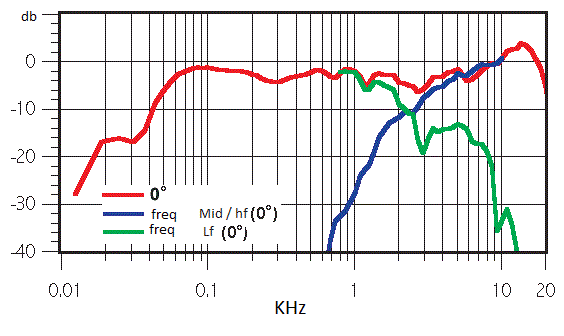 |
| Fig. 1. Amplitude frequency response |
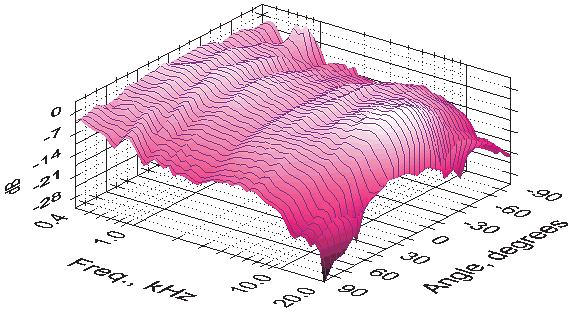 |
| Fig. 2. Frequency-angle characteristic |
 |
| Fig. 3. Frequency response characteristic |
 |
| Fig. 4. Coefficient of nonlinear distortion |
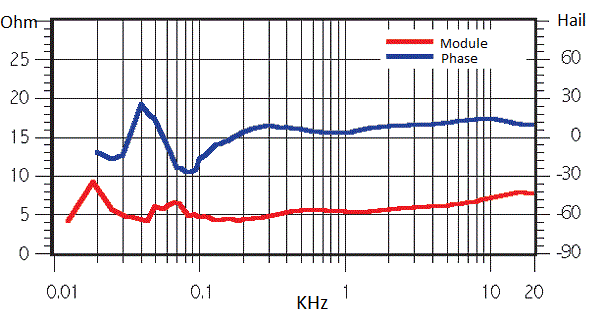 |
| Fig. 5. Input impedance module |
 |
| Fig. 6. Rectangular impulse |
The measured frequency response (Fig. 1) is stable over most of the range. The unevenness of the frequency response at high frequencies is slightly increased; The increase in sensitivity in the upper two octaves (5–20 kHz) recorded by the microphone located on the axis of the dome HF-head is not perceived by the ear in a negative context. Differences in the measured and passport values of the lower limit are mainly due to the peculiarities of the frequency measurement technique in conditions simulating an infinite space (pulse method), which does not fully take into account the radiation of the bass reflex ports located on the rear panel (a characteristic "break" in the frequency response on its left slope ); if we properly extrapolate the frequency response in the lower part of the range, then it is quite possible to agree with the passport data.
The corporate form has a frequency-angular characteristic (Fig. 2): the tonal structure of the sound field changes slightly in a wide angular sector of the "view" (in the horizontal plane); only at angles exceeding 45 ° (relative to the axis of the high-frequency head), in the upper octave (10–20 kHz), the energy of high-frequency radiation decreases noticeably. Thus, the general nature of the spectrum of signals reflected from the side walls of the listening room will be close to the spectrum of the direct component, which, according to DALI experts, contributes to an increase, so to speak, of the focus of the sound image. Dissipation effects are quite insignificant (Fig. 3); a weak sound around 1 kHz (bending vibrations of the woofer / midrange driver?) can hardly have any significant consequences; exemplary clean at high frequencies.
The graph of the dependence of the harmonic distortion factor on frequency looks excellent (Fig. 4): the average THD at a sound pressure level of 82 dB is 0.1%, and at 94 dB it rises to only 0.3%; special attention is drawn to the rare purity in the low frequency range (0.4%, 88 dB); the role of a slightly more than 4% THD peak at 60 Hz (94 dB) can be safely neglected. The level of intermodulation interference is also very low, not exceeding in most of the mid-frequency section the value of 0.3% (94 dB).
No less remarkable is the form of the frequency dependences of the module and the phase of the input impedance (Fig. 5): with an average module value of 5.8 Ohm, the minimum is 4.2 Ohm (the standard deviation is ± 1.1 Ohm!); the phase, having experienced an inevitable resonant transition through zero in the low frequency region, above 100 Hz, steadily follows a course parallel to the frequency axis, only slightly deviating from the zero horizon; such an almost purely active load is a balm for the output stages of any amplifier. The system collectively reacts to a short (0.3 ms) impulse action (Fig. 6); a small wavy "tail" on the graph - weak mid-frequency overtones (see Fig. 3).
DALI Helicon 400 Jubilee Floor standing speakers Specifications
Sensitivity, dB - 88.5
Recommended amplifier power, W - 50-300
Frequency response, Hz - 31.5-27000 (+/- 3dB)
Number of stripes - 3.5
Acoustic design type - bass reflex
Drivers -
HF - 25 mm; HF - 55x10; 2x MF / LF - 165 mm
Height, mm - 1026
Width, mm - 219
Depth, mm - 457
Weight - 31.65
Crossover frequency, kHz - 0.7 / 3 / 13.5
Nominal input impedance, Ohm - 4
Measurement results
Average THD,% (100 Hz - 20 kHz), 88 dB - 0.2
Average THD,% (100 Hz - 20 kHz), 82 dB - 0.1
Average THD,% (40 Hz - 100 Hz), 88 dB - 0.4
Average THD,% (40 Hz - 100 Hz), 82 dB - 0.5
Frequency response parameters
Ripple, ± dB (100 Hz - 20 kHz) - 2.1
Imbalance, dB (160 Hz – 1300 Hz) - 0.6
Unevenness, ± dB (160 Hz - 1300 Hz) - 1.1
Imbalance, dB (1300 Hz – 20 kHz) - -0.4
Ripple, ± dB (1300 Hz - 20 kHz) - 2.7
Imbalance, dB (45 ° angle) - 3.1
Unevenness of the characteristic, ± dB (angle 45 °) - 3.7
Cutoff frequency, Hz (at the level of –10 dB) - 43.8
Input impedance
Root mean square deviation of resistance, Ohm - 1.1
Average value of resistance, Ohm - 5.8
Maximum resistance, Ohm - 9.2
Minimum resistance, Ohm - 4.2
Design
Average sensitivity, dB at 2.83 V at 1 m (100 Hz - 20 kHz) - 91.6
Average THD,% (100 Hz - 20 kHz), 94 dB - 0.3
Average THD,% (40 Hz - 100 Hz), 94 dB - 1.6
Magnetic shielding - Not
Separate connection - Yes
Execution - cherry veneer
Peculiarities - Thorns



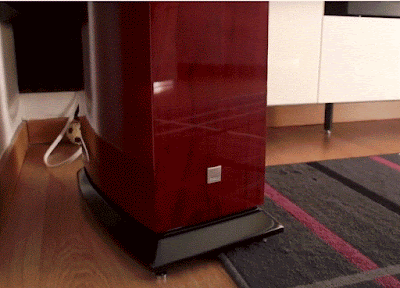
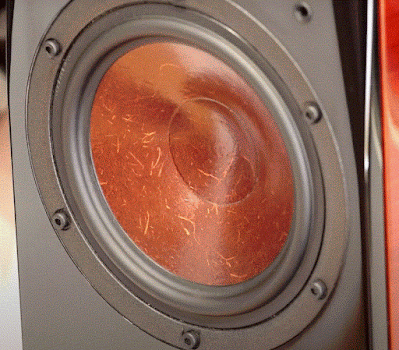
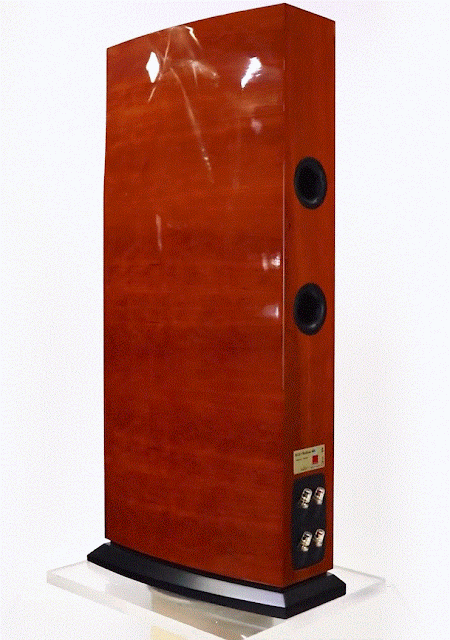
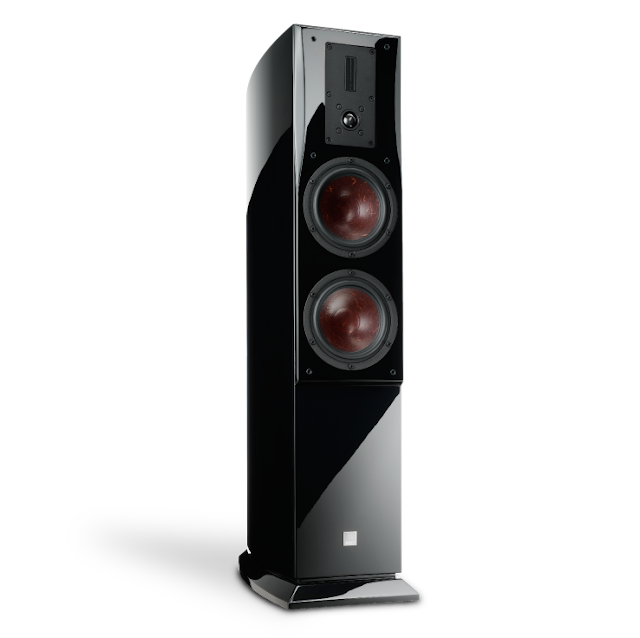
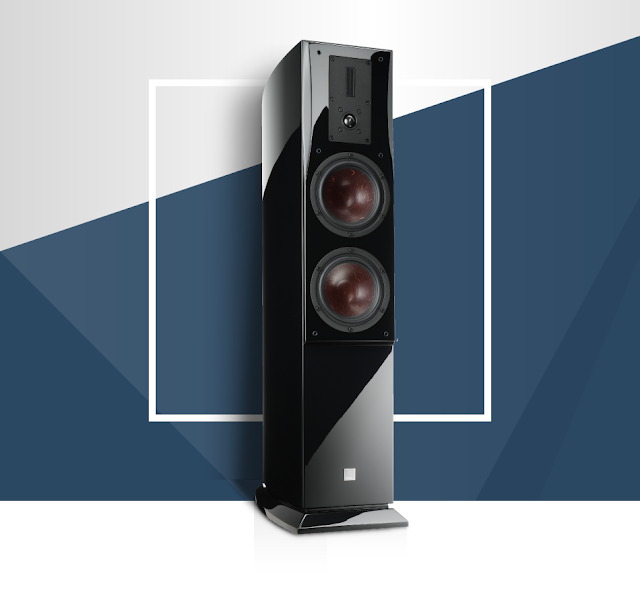








.jpg)



0 Comments